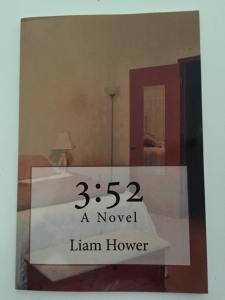In this week’s series, school and district leaders will share their insight on ways to support writing teachers. Stay tuned this week as they share their thinking on how to support whole schools. Today’s post is from Dr. Aileen P. Hower, K-12 Literacy/ESL Supervisor for South Western School District in Hanover, Pennsylvania.
As a K-12 literacy supervisor who also serves as a literacy coach to support teachers’ implementation of our writing curriculum, I work closely with teachers who teach the Units of Study (Calkins, et. al, 2013) at the second through sixth grade levels. Given that our district’s mission is to give voice and choice to our learners, teachers frequently incorporate technology into writing workshop, in order to differentiate approaches to writing, to add depth to informational and argumentative writing, and to support conferencing with writers. As an administrator, I have found this to be a huge benefit to both our writing instruction, and to achieving the district mission.
Across district classrooms, writers enjoy choice, facilitated through technology. Donald Graves once shared, “When children choose their own topics, I can expect more of their writing” (as cited in Newkirk & Kittle, 2013, p. 61). First, writers are able to use technology to word process their writing. This changes how our youngest writers approach the revision process. Due to some writers’ reluctance to physically write and rewrite, word processing has given writers the opportunity to make changes to their pieces efficiently. In the words of one second grader, “I like when I don’t have to erase. I can just backspace.” A fifth grader shared this about word processing his writing, “It makes [writing] more efficient. Even if I don’t have the best handwriting, people can understand my writing when I type.”
Then, technology allows writers to engage in learning about new topics through safe resources. In earlier grades, writers access PebbleGo through school libraries. Self-described as “The Emergent Reader Research Solution,” writers in kindergarten through third grades can conduct research for their writing. Writers have also use Wonderopolis to explore topics and then write about their wonders.
At the primary level, writers have researched a topic such as sharks, written a script, and then published it through ChatterPix Kids. ChatterPix is an iPad app that allows learners to record themselves reading their writing while making their artwork come to life. An example of a Kindergarten class using ChatterPix can be found here. In a similar way, fifth graders across our district presented their informational writing about explorers through Blabberize. Writers appreciate presenting their writing in different formats using technology. Administrators are grateful that students are learning about the research and writing process in an engaging manner.
In Write Like This, Teaching Real-World Writing Through Modeling and Mentor Texts, Kelly Gallagher (2011) wrote, “There Is No Such Thing as a Five-Paragraph Essay. If our goal is to develop lifelong writers, and we recognize that the five-paragraph essay doesn’t exist in the real world, then why are we still hammering it into our students’ heads?” (p. 230). In my district, teachers in sixth grade have their students incorporate digital tools into their writing and publish more interactively using Discovery Education’s BoardBuilder. The results are two-fold. This technology allows writers to create works that look like the writing they see on the internet (real-world like writing). Technology also encourages writers to analyze which photograph or video supports their purpose for writing.
Integrating technology allows writers to see writing as a creative process. In narrative writing, secondary writers participate in the National Novel Writing Month. Last year, writers in sixth grade published their books independently, and each took a published version of their novel home.
This approach to writing has supported a smooth transition, curricularly, and with regard to writers’ feeling prepared for the work they need to do as writers in high school.
Where I have seen technology support writing workshop the most is with the use of Google Docs. As early as third grade, when writers draft in Google Docs, teachers can provide feedback to them electronically, and more quickly. I have observed teachers with iPad in hand, roaming the room, reading writing that has been shared with them, and then sitting down with a writer to confer, due to what they read, or what the writer flagged as a trouble spot, which required a conference. Feedback can be ongoing, such as what is seen in this screen capture of a writer’s flash draft with teacher comments.
Finally, conferences can occur between peers. Teachers have assigned writing partners who offer feedback through the comments feature. A seventh grader shared that he likes highlighting a part of the text and posing a question for his writing partner to take into consideration. He has found that the comments his classmates have made on his writing have helped him make useful revisions. As conferring is the most powerful means through which to support writers’ growth, technology that provides teachers and students more accessibility and ease to offer feedback is seen as a useful advancement.
Not every day in our district will you see students using technology to write. Many times, I visit classrooms to see writers meeting on the carpet with their writer’s notebooks and pencils in hand. At the same time, writers actively engage with the research process and create more dynamic research projects with digital tools. They value writing like the authors of their mentor texts by adding a photograph, map, text box, or video to their own writing, to enhance their message to their audience. Finally, they appreciate extending their writing time and their opportunities to receive feedback. Technology allows their teachers to confer with them outside of the actual writing workshop time. Overall, I have seen technology enhance the outstanding teaching and writing that is taking place within the writing workshop model.
Dr. Aileen P. Hower is the K-12 Literacy/ESL Supervisor for South Western School District, is the coordinator of the Eduspire and Penn State York Summer Literacy Institutes and teaches graduate level reading courses for Penn State York, Cabrini College, and Eduspire. In addition to teaching, she is the vice president elect for the Keystone State Reading Association. You can find her on Twitter at (@aileenhower) or on her blog (aileenhower.wordpress.com).




I love this post! I teach 3rd grade and my students love technology. Their favorite is to publish in google docs, especially my reluctant writers, whether it’s a response to text or an informational piece. It adds a new excitement to writing and they love the comments. I have not had students comment to each other yet, just with me, so this may be the next step. They respond better to my electronic comments than when I leave them on paper! I want to look into the feature on Discovery Education you mentioned to expand their technology experiences. Thank you!
LikeLike
Thank you for reading and sharing how you may be able to use the ideas.
LikeLike
Aileen,
So many new tools and productive ideas for stretching writing, I will be returning to this post often! I had to laugh when I read, “I like when I don’t have to erase. I can just backspace.” I once heard a student say, “I need to delete this” as he was erasing pencil marks!
LikeLike
My son once asked if there were a backspace on the microwave. I love how easily they can incorporate technology into different parts of their lives.
LikeLiked by 1 person
Love this quote: “I like when I don’t have to erase. I can just backspace.” That says so much about the way writing helps some kids personalize the process so it works for them.
Thanks for the info on Chatterpix. I can’t wait to check it out.
LikeLike
The students love it!
LikeLike
Fantastic, richly layered post I will return to for ideas! I loved seeing Chatterpix in action. My own children love the app but I didn’t see connections to the classroom until now! Thanks so much for so many great ideas and ways to integrate technology!!
LikeLike
Thank you for the feedback and for reading! I am learn better when I see an idea in action.
LikeLike
Great suggestions, Aileen. I teach numerous two-day literacy workshops each summer and I look forward to passing on your very helpful information.
LikeLike
I’m so glad you found it helpful!
LikeLike
Wonderful article, Aileen! Practical suggestions for teachers at all grade levels.
LikeLike
Thank you very much for reading!
LikeLike
Aileen, such a great post and so timely for me right now. I am at the tipping point in my classroom and want to bring technology to my writer’s workshop but need guidance about how to choose the right platform and how to launch it.
LikeLike
I’m so glad you may have gotten a few ideas to move to bringing more technology into your repertoire. What a fun journey you are on!
LikeLiked by 1 person